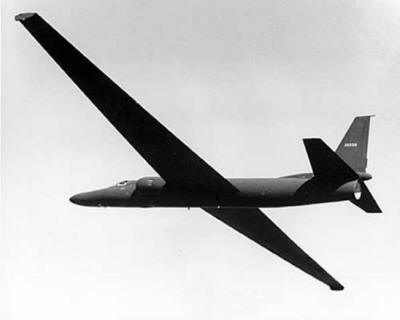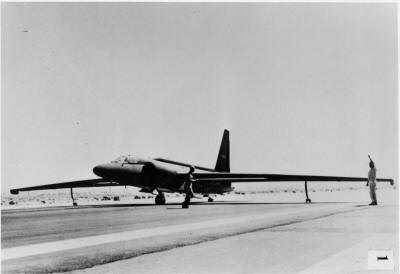|
|
|
from
Examiner Website
CIA has admitted for the first time that Area 51 exists by officially acknowledging it by name in a document released through the Freedom of Information Act.
Major media networks today gave wide coverage to the CIA admission that Area 51 is real.
The CIA document was released to Jeffrey Richelson, a Senior Fellow at the National Security Archive, George Washington University who requested further information on the history of the U-2 Spy Plane. In the document, the CIA acknowledges that Area 51 was chosen due to the suitability of the Groom Lake dry sand flat for testing secret spy planes.
What the CIA document didn’t mention was another dry lake bed nearby, Papoose Lake, which is only 12 miles away.
According to whistleblowers, this is the location of an even more secretive facility called S-4 where a variety of saucer shaped spacecraft are tested and reverse engineered.
This is the facility named by Bob Lazar in 1989 who briefly worked there, and disclosed all to George Knapp in a series of interviews for Las Vegas television station KLAS.
S-4 is where you will find alien spacecraft and even live extraterrestrials according to Lazar and other whistleblowers.
According to the document released by the CIA, 'The Central Intelligence Agency and Overhead Reconnaissance - The U-2 and Oxcart Programs' (pdf large file), Area 51 was discovered in April 12, 1955 during an overflight and landing at Groom Lake located near the Nevada (Atomic) Test Site.
The document authors, Gregory Pedlow and Donald Welzenbach, wrote that no less than the U.S. President officially approved the building of the secret facilities at Area 51:
According to Richelson, the official acknowledgment:
What Richelson doesn’t mention, along with the authors of the CIA document, is another facility nearby at Papoose Lake.
This is where the whistleblower Bob Lazar claims to have been taken after flying to Area 51 from Las Vegas on a JANET flight - an air shuttle for Area 51 workers.
Lazar claims to have personally seen up to nine different flying saucer type craft, some of which were alien in origin. Lazar worked on the propulsion system and was paid by an unacknowledged branch of the US Navy called the Department of Naval Intelligence.
Lazar eventually decided to go public, and become a whistleblower. His interviews with George Knapp from KLAS-TV became world famous, and put Area 51 on the map for UFO investigators.
More recently, in May 2013, a retired CIA agent going by the pseudonym ‘Kewper’ gave video testimony before six retired members of the US Congress about an incident involving President Eisenhower requesting information and access to the S-4 facility in 1958.
It appears that in the three years or so since the building of Area 51 and the adjacent S-4 facility, that the managers of S-4 decided to withhold information about what was happening there.
Eisenhower had to threaten to invade S-4 with the US First Army before its managers decided to share classified information with him.
According to the CIA agent, the S-4 facility housed a number of extraterrestrial space vehicles along with a captured live alien that he personally saw.
His CIA boss, along with other agents, even got to directly interview the live alien. In 1997, a whistleblower using the pseudonym Victor, released a video of a live alien being interviewed at S-4.
The official acknowledgement by the CIA that Area 51 exists is welcome advance in getting the CIA to release information about secret aviation projects near Groom Lake. However, the testimony by Lazar, Kewper and others suggests that Area 51 is not where the most classified projects take place.
Area 51 is a convenient cover for even more secretive advanced aviation programs housed at S-4 at the nearby Papoose Lake. The CIA is only telling a half-truth that you won’t find any extraterrestrial technologies or alien beings at Area 51 according to Lazar and others.
It is at the nearby S-4 facility next to Papoose Lake where alien spacecraft and their pilots can be found.
August 15, 2013
US Spy Planes Targeted China to Help India; Used British Crews to "Confuse the Soviets"
and Overflew French Nuclear Sites
Early U-2 in flight. (Photo credit: CIA)
On 21 February 1955, Richard M. Bissell, a senior CIA official, wrote a check on an Agency account for $1.25 million dollars and mailed it to the home of Kelly Johnson, chief engineer at the Lockheed Company's Burbank, California, plant.
According to a newly declassified CIA history of the U-2 program obtained under the Freedom of Information Act by National Security Archive senior fellow Jeffrey T. Richelson, the Agency was about to sign a contract with Lockheed for $22.5 million to build 20 U-2 aircraft, but the company needed a cash infusion right away to keep the work going.
Through the use of "unvouchered" funds - virtually free from any external oversight or accounting - the CIA could write checks to finance secret programs, such as the U-2.
of a R-7 missile launch pad at the Tyuratum missile test center.
As it turned out, Lockheed produced the
20 aircraft at a total of $18,977,597 (including $1.9 million in
profit), or less than $1 million per plane. It was all "under
budget," a miracle in today's defense contracting world.
Written by agency historians Gregory Pedlow and Donald Welzenbach, and titled The Central Intelligence Agency and Overhead Reconnaissance: The U-2 and OXCART Programs, 1954-1974, the study was published in classified channels in 1992.
Subsequently, a heavily redacted version of the U-2 portion was published, in 1998, by the agency's Center for the Study of Intelligence as a book, The CIA and the U-2 Program, 1954-1974, in conjunction with a CIA conference on the U-2.
The full study, in redacted form, had been released in response to FOIA requests.
In addition, the release also contains newly declassified on one manned and two unmanned aerial reconnaissance efforts.
The CIA's declassified map of Groom Lake/Area 51.
Specifically, newly declassified material on:
The many books and articles written on the aerial reconnaissance programs, particularly the U-2 and the OXCART (and its Air Force variant, the SR-71), include much information about these topics, often with significant accuracy.1
However, the newly released material provides a combination of significant new material, official confirmation of - or corrections to - what has been written, and official acknowledgment that permits researchers to follow up the disclosures with FOIA or Mandatory Declassification Review requests that may produce even more information.2
Moreover, like any historical study, the
CIA history may include errors that will require further scrutiny by
researchers in the field.
(Photo credit: CIA)
Commentary by British U-2 Historian Chris
Pocock on the CIA History
According to a previously excised comment in the CIA history, Pocock's book, Dragon Lady, is,
Recognizing that any historical study has its limitations and needs to be approached critically, Mr. Pocock has closely scrutinized the CIA history and has kindly provided us with his detailed preliminary reactions on a page-by-page basis: The Central Intelligence Agency and Overhead Reconnaissance - The U-2 and OXCART Programs, 1954-1974 by Gregory W. Pedlow and Donald E. Welzenbach, written 1992 (S/NOFORN).
The U-2 portion declassified with reactions in 1998. FOIA request for a review of the redactions by the National Security Archive in 2005.
Document review completed and approved for release 25 June 2013.
NOTES
|






